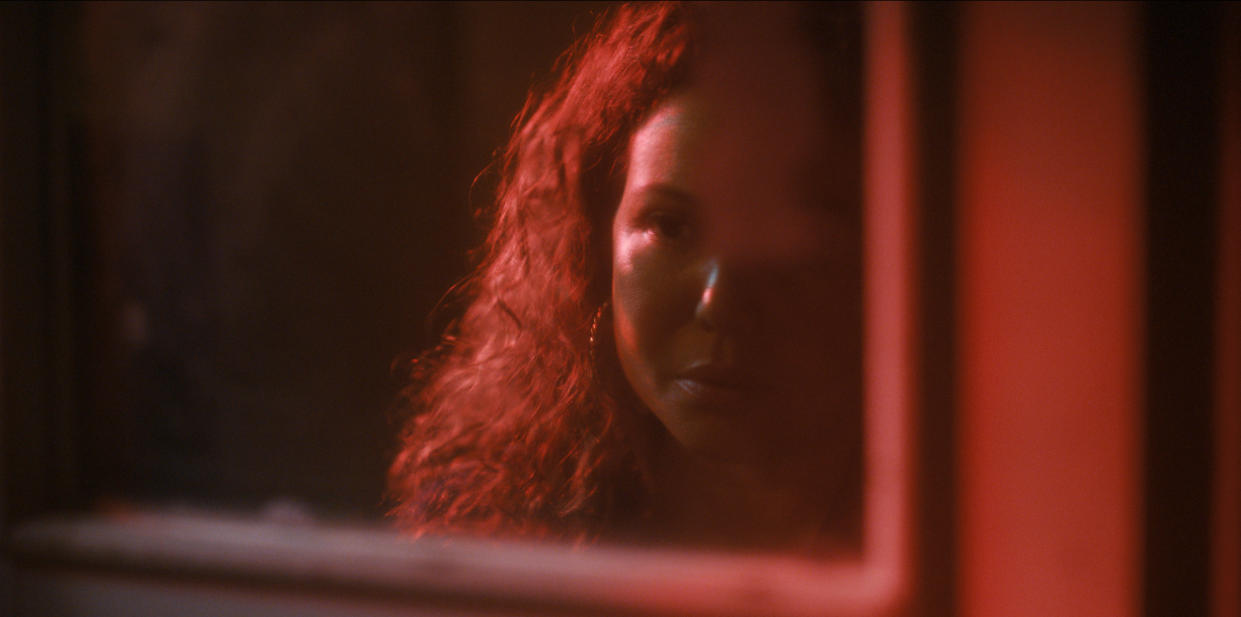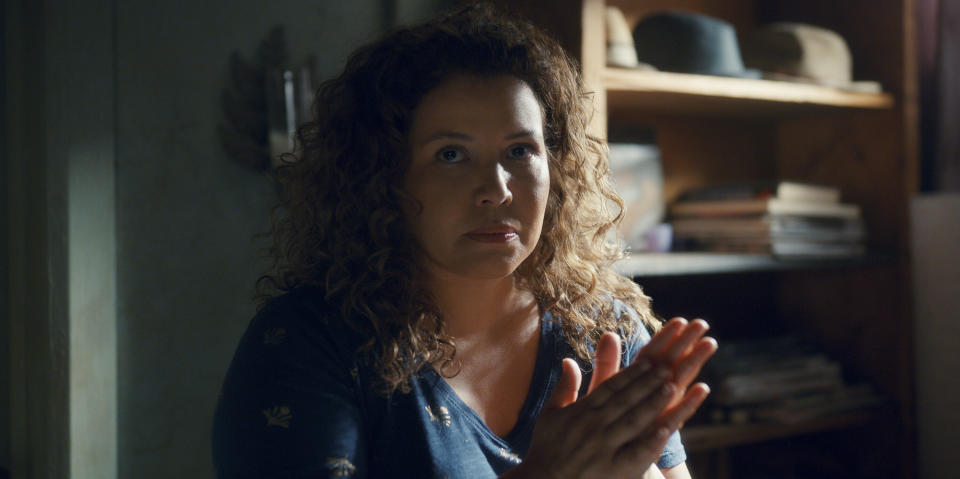‘The Horror of Dolores Roach’ Cleverly Puts Audiences Firmly in the Shoes of a Serial Killer

- Oops!Something went wrong.Please try again later.
- Oops!Something went wrong.Please try again later.
Dolores Roach has been through a lot. So has “The Horror of Dolores Roach.” The modern take on Sweeney Todd — crucially transposed to a gentrifying Washington Heights where any interloper walking their poodle in a stroller honestly deserves whatever happens to them — began its life as a solo play by Aaron Mark, starring Daphne Rubin-Vega. It was then produced as a Gimlet audio fiction series (also starring Rubin-Vega) before it made the leap to Prime Video. But Mark had specific emotional and thematic touchstones in mind for each version of the story, ones that bring all the different iterations of Dolores much closer to each other.
It was always important for Mark to craft a sense of closeness to Dolores (Justina Machado in the Prime Video series, with Rubin-Vega now a writer and executive producer) and culpability in the audience. Mark wanted the audience to feel that, in her specific circumstances, any of us would wind up wringing a couple necks and letting the cute empanadas guy upstairs do whatever he wants with a body or two.
More from IndieWire
Nicolas Winding Refn Announces Animated TV Series in the Works
As Paramount+ Loses Billions, 285 FAST Channels Bring Reliable Cash to Paramount Global
“The play is really Grand Guignol horror on stage,” Mark told IndieWire. “It was intentionally claustrophobic, start to finish. You’re trapped in a room with Dolores. That’s the bit. With the podcast, she’s whispering in your ear. So the whole thing is predicated on this very intensely focused intimacy that, for television, you have to use a different mechanism.”
The mechanism that Mark and his team found wasn’t the most obviously visual one; it was structural. There isn’t a scene in “The Horror of Dolores Roach” that doesn’t have Dolores in it. The structure of the series — all from Dolors’ point of view — is intentionally claustrophobic. Maybe the show’s best joke is its decision to frame the story as Dolores relaying how she became a true crime sensation to the actress playing her in a stage adaptation of a podcast.
Television is pretty porous in terms of the amount of information we absorb second by second, even without realizing it. We pick up cues about characters’ emotions, personalities, and place in the world from how they walk, dress, and what they have around them. “What we can communicate with Justina’s face [in a moment] might take two paragraphs of dialog in a podcast,” Mark said. But Mark and his team deliberately keep the world around Dolores narrow and desperate, forcing audiences to rely inordinately on her face and voice for context as to how we should interpret this half-hour horror comedy. And it’s not always an even split.

“If the fundamental construct of the project is that you, dear viewer, are in the experience of becoming a serial killer, we must be super aligned with this individual [who becomes a serial killer]. It’s so unusual to have a television show where there’s one character in every scene,” Mark said. “And certainly at times in the development we experimented with, ‘Well, what would it be like in a visual medium if we didn’t have that?’ And it always felt like, yes, we still got across the same fundamental story, but there’s a piece of inextricable alignment that was lost.”
The determination to always center Dolores also centralized the show’s perspective on gentrification. “[Dramatizing] gentrification can very easily become over-the-top comical. Conversely, it can be so subtle that people don’t quite pick up on it. If we’re not able to show a ton of footage of what Washington Heights actually was 15 years ago to communicate the differences? It’s an incredibly tricky thing,” Mark said. “So we relied on not only a production design team that would go to Washington Heights and be meticulous, but on our cast. The challenge became about how we communicate via [Machado’s] brilliant face. Even if the viewer doesn’t understand visually how this neighborhood has changed, you understand its impact on her.”
Placing the show’s dramatic onus on narrative structure and an actor’s face makes “The Horror of Dolores Roach” feel closer to its stage and podcast iterations, where we cling to the characters that much tighter because of what we can’t see. But in terms of visually expanding the world of “The Horror of Dolores Roach,” Mark stressed the most important thing was to always give context to Dolores and the home she sees slipping away from her. “It was very important to me that the perspective of the show, that the neighborhood, never felt like an Other, never felt like, ‘Oh, we’re peering in on this thing,’” Mark said. “This is what we’re tethered to emotionally, and the love and the celebration of that neighborhood and the community and the pride that I found living there, that the people who live there feel, comes through.”
Best of IndieWire
Where to Watch This Week's New Movies, from 'Barbie' to 'Oppenheimer'
The Best Sex Scenes of the 21st Century: 'Beau Is Afraid,' 'Call Me By Your Name,' and More
Christopher Nolan's Most Essential Collaborators, from Cillian Murphy to Ludwig Göransson
Sign up for Indiewire's Newsletter. For the latest news, follow us on Facebook, Twitter, and Instagram.

